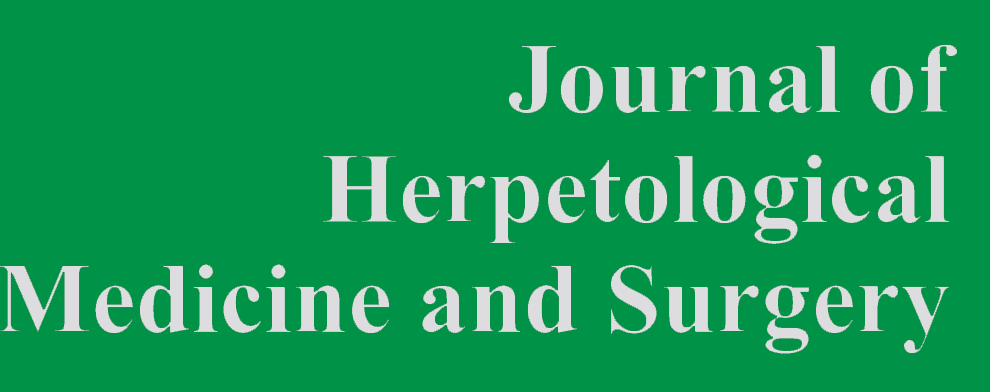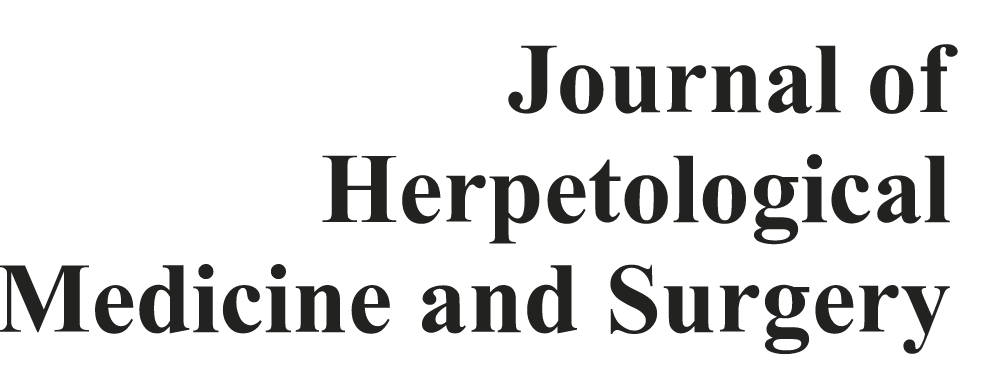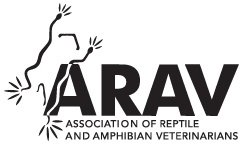Novel Imaging Modalities for Antemortem Diagnosis of a Suspected Jugular Thrombus in a Bearded Dragon (Pogona vitticeps)
A 5-yr-old male central bearded dragon (Pogona vitticeps) presented with a 3 day history of left forelimb lameness, minimal muscle tone, and absent pain sensation distal to the midhumerus. Computed tomography (CT) revealed thickened and hypoattenuating soft tissues adjacent to the left scapulohumeral and left neck regions with no abnormal contrast enhancement. The suspected left external jugular vein in this region was ill defined and small, with filling defects, consistent with the appearance of a venous thrombus. Focal ultrasound of the left side of the neck confirmed a thrombus in this location, just cranial to a jugular venous valve. The patient was treated with supportive care and started on clopidogrel as an antithrombotic treatment. Clinical improvement was minimal following this visit, and the patient presented again 5 months later after declining significantly. On follow-up imaging at this visit, a suspected cardiac mass was seen on echocardiography. A fine-needle aspirate of the mass at that time was suspicious for a sarcoma; however, the sample was nondiagnostic. The previously identified thrombus could not be detected on ultrasonography at this visit. The owner ultimately decided to pursue hospice care at home and no additional imaging or further workup was performed. This is the first report in reptiles describing a venous thrombus using diagnostic imaging. Given the reported occurrence of aneurysms and thrombi in bearded dragons in clinical practice, this case demonstrates the use of an important tool for diagnosis of these conditions.Abstract

Postcontrast computed tomographic images, soft tissue algorithmic images on the (A) transverse plane and (B) dorsal plane of the cranial coelom in a 5-yr-old, male central bearded dragon (Pogona vitticeps), showing ill-defined, poorly marginated, increased soft tissue thickening (asterisk) in the left cranial coelomic cavity with homogeneous contrast enhancement. The soft-tissue thickening is located left cranial to the heart, causing compression and rightward deviation of the heart (arrow). The contrast enhancement of the soft tissue thickening is similar to the adjacent soft tissue structures.

Postcontrast computed tomographic images (soft tissue algorithmic image on the dorsal plane) of the caudal cervical region in a 5-yr-old, male central bearded dragon (Pogona vitticeps), showing an ill-defined left jugular vein with a filling defect in the lumen of the left jugular vein (arrow). (A) The right jugular vein (arrowhead) is well defined and normally contrast enhancing. (B) On the 3D reconstruction image of postcontrast computed tomographic images (soft tissue algorithm), no left jugular vein is identifiable because of the venous thrombus; the right jugular vein is identifiable and normally contrast enhancing (arrowhead).

Ultrasonographic images of a left jugular venous thrombus in a 5-yr-old, male central bearded dragon (Pogona vitticeps), (A) showing homogeneous echogenic material in the lumen of the left jugular vein (arrows) on the longitudinal view. The left jugular venous valves (asterisk) are visible. (B) On the longitudinal view, no overt Doppler signal was obtained on the echogenic material in the lumen of the left jugular vein (arrows).

Echocardiographic images of a 5-yr-old, male central bearded dragon (Pogona vitticeps), (A) showing an ill-defined homogeneous echogenic structure in the pericardial space (asterisk) on the parasternal long axis view. No overt Doppler signal was obtained on the echogenic structure. (B) On the same parasternal long axis view, a small amount of anechoic pericardial effusion (arrow) is visible.



